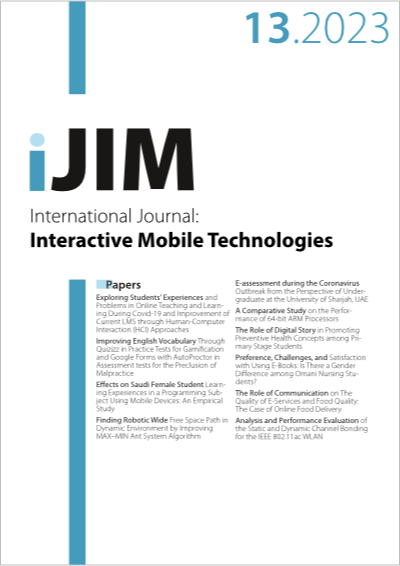Analysis and Performance Evaluation of the Static and Dynamic Channel Bonding for the IEEE 802.11ac WLAN
DOI:
https://doi.org/10.3991/ijim.v17i13.41601Keywords:
SCB, DCB, MIMO, IEEE 802.11ac, NS-3Abstract
According to the rising number of users and the application development that needs fast transfer rates. The main objective behind the development of IEEE 802.11ac was to deliver WLANs with exceptionally very high throughput rates. Significant improvements were incorporated into the PHY and MAC layers to achieve this, leading to enhanced data rates and overall network performance. These enhancements have enabled the standard 802.11ac to support channel bonding schemes. This paper looks at how channel bonding affects the performance of system, especially in terms of delay and amount of throughput. The research paper looks at four different scenarios with different numbers of channel BW 40,80 & 160MHz, and various spatial streams (SS) from 1 to 8. The network simulator (NS-3) version 3.37 is used to simulate these scenarios. The results of the simulation indicate that when Dynamic Channel Bonding (DCB) is applied, the highest throughput and least amount of delay values are acquired. Specifically, for MIMO (8×8) SS and with respect to the Static Channel Bonding (SCB), the best improvement of throughput and delay are obtained with DCB in the highest (48 node number) scenario. The throughput development values are (90.21%, 87.3%, and 42.91%) and the delay improvement values are (47.43%, 46.61%, and 30.03%) for channel BWs 40,80, &160 MHz, respectively.
Downloads
Published
How to Cite
Issue
Section
License
Copyright (c) 2023 Haider TH.Salim ALRikabi; Ziyad Khalaf Farej , Mohammed Ahmed Hassan

This work is licensed under a Creative Commons Attribution 4.0 International License.


